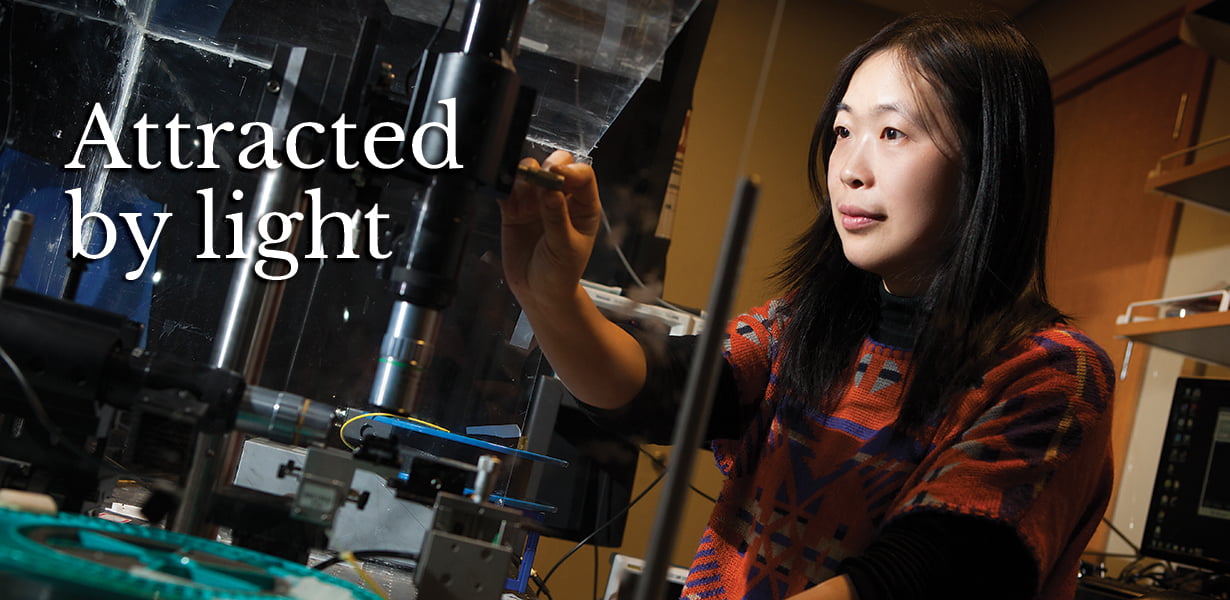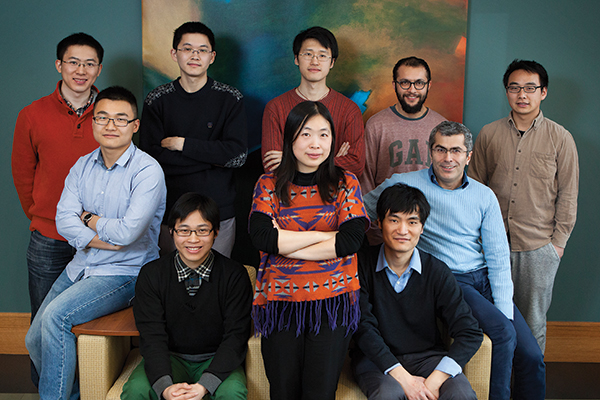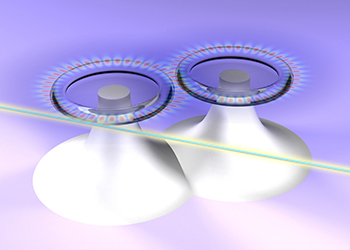Attracted by light
Lan Yang

"I resolved that I wanted to do work that influences others and impacts the world, and I thought that light is a wonderful thing that enables many important discoveries."
— Lan Yang, PhD
In the small city of Hong Jiang, Hunan Province, China, Lan Yang's hometown, the Washington University School of Engineering professor is an inspiring role model for students, especially young girls.
Yang, PhD, the Edward H. and Florence G. Skinner Professor in the Department of Electrical & Systems Engineering, has blazed a remarkably swift career path in photonics and nanoparticles where her results have turned physics notions atop their venerable heads. On sabbatical in 2014, Yang gave four lectures in one activity-jammed week in Hong Jiang. The turnout included her elementary school teacher, now over 90 years old, and her high school principal. The audience was mostly teachers, parents and students. Two lectures in particular were intended for students.

Her message: "If you have the talent, let nothing stop you," she says. "The stereotype that girls aren't good at science and math still remains in China. This is puzzling to girl students, as the differences between individuals are larger than gender differences. I was gratified by the turnouts, but most impressed with the questions I got from girl students."
The seed that she might one day become a math teacher was planted by a caring middle school teacher who, seeing Yang's talent and intellectual hunger, bought her mathematics books written by professors at the University of Science and Technology of China, a top technical institution, where she would matriculate in the 1990s as the first student from her hometown to go there in decades.
As a teen, Yang was undaunted. In the Chinese educational system at the time, students had two choices after finishing junior high: They took entrance exams to determine whether they would advance to high school and eventually college, or to a three-year professional school that guaranteed a profession and a government job. Yang ranked first in the professional school exam, making her a shoo-in for entrance, and second in the high school test. Her choice was obvious, but her mother lobbied for her to go the safer, professional route.

But Yang dug in her heels. Virtually on the eve of setting off for a professional school in a large city of Hunan Province, Yang went on a hunger strike. It lasted one day, but made the point to her parents. When Yang's mother, Youmei Yang, realized the college dream meant so much to her daughter, she went to the head of the local education bureau and asked if the decision could be reversed and to change Yang's application for professional school to an application for high school, and she was told no. Yang's mother wept in the office. Who should come upon her but Wenxiang Zhong, the local high school principal and an old friend of Yang's father, Rongchun Li. Zhong was at the local education bureau for business and reassured Yang's mother that her daughter was such an outstanding student that she would undoubtedly thrive in college. Yang's father also reached out to his friends seeking help and advice. The hunger strike was thwarted when Yang's parents insisted that the family visit the principal so he could assure them that Yang would be admitted to high school.
Eventually, Yang enrolled in a special class for gifted youth at the University of Science and Technology of China, earning a bachelor's degree in materials science and a master's in solid state physics, and was admitted to the fabled technology giant, California Institute of Technology (Caltech), where she first saw the light.
"I was searching for a focus for my doctoral work when light resonated with me," she says. "I resolved that I wanted to do work that influences others and impacts the world, and I thought that light is a wonderful thing that enables many important discoveries."
Yang changed her degree from materials science to applied physics.
At Caltech, she used a variation of the sol gel method to create a device to make microlasers on a silicon wafer. Toward the end of her doctoral work, she began to observe a recurring phenomenon in her microlasers: A single resonance can split in two if something on the resonator can scatter light. After she founded the nano/microphotonics lab at Washington University, this observation was integral to Yang's development with collaborators of a new sensor that can detect and count nanoparticles at sizes as small as 10 nanometers, one at a time, opening up intriguing possibilities in biosensing, pollution control, cancer detection and pharmaceuticals.
In 2014, Yang and her colleagues showed that laser systems can actually gain in energy when loss is introduced to the system. Energy loss in optical systems, such as lasers, is a chief hindrance to their performance and efficiency, and it occurs all the time.
Counterintuitive and paradoxical, the results of three experiments showed that, once the lasing starts, output power becomes higher and higher when more loss is introduced.
"This turns the conventional textbook understanding of lasers upside down," says her Washington University collaborator Sahin Kaya Ozdemir, PhD, a research associate professor in Yang's lab.
In the near future, Yang intends to integrate electronics with photonics. She plans to collaborate more with medical school researchers, for example, to trace the drug release profile of a single nanoparticle, which could be useful in disease detection or remediation.
"We hope to integrate light with electronics to form some hybrid structures to achieve functionalities that cannot be achieved by electronics or photonics alone," she says.
Back to Engineering Momentum